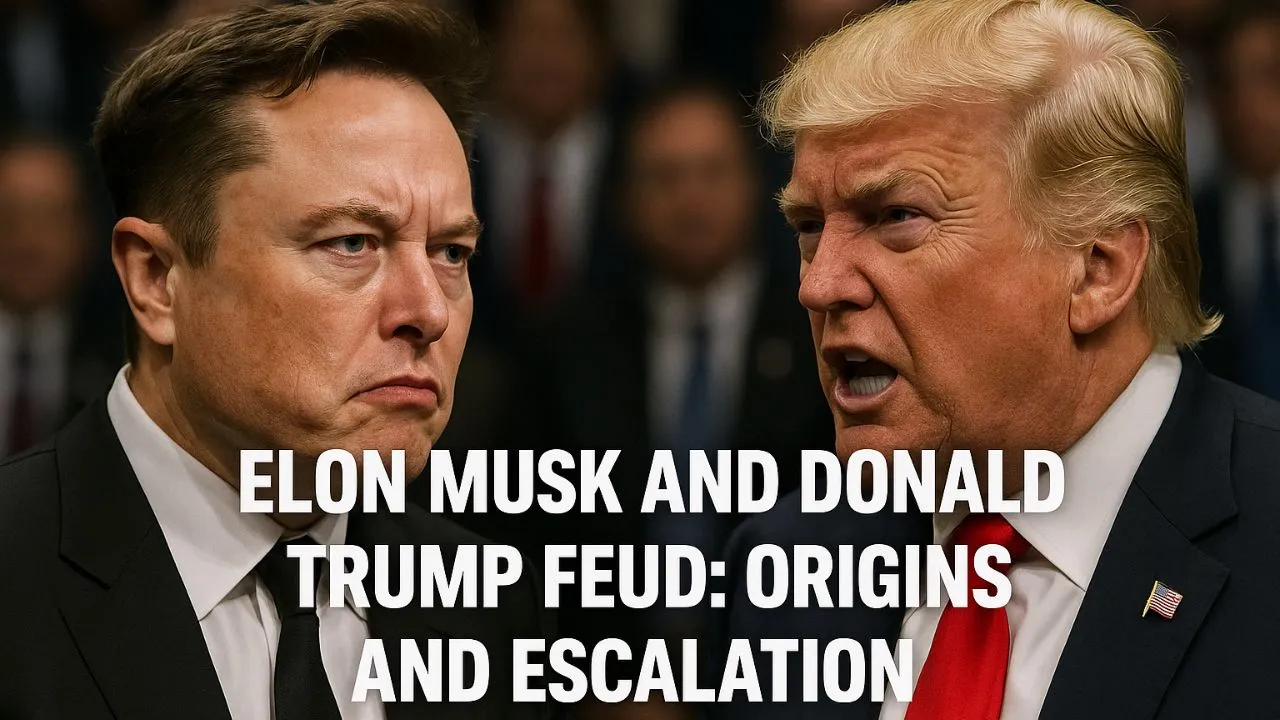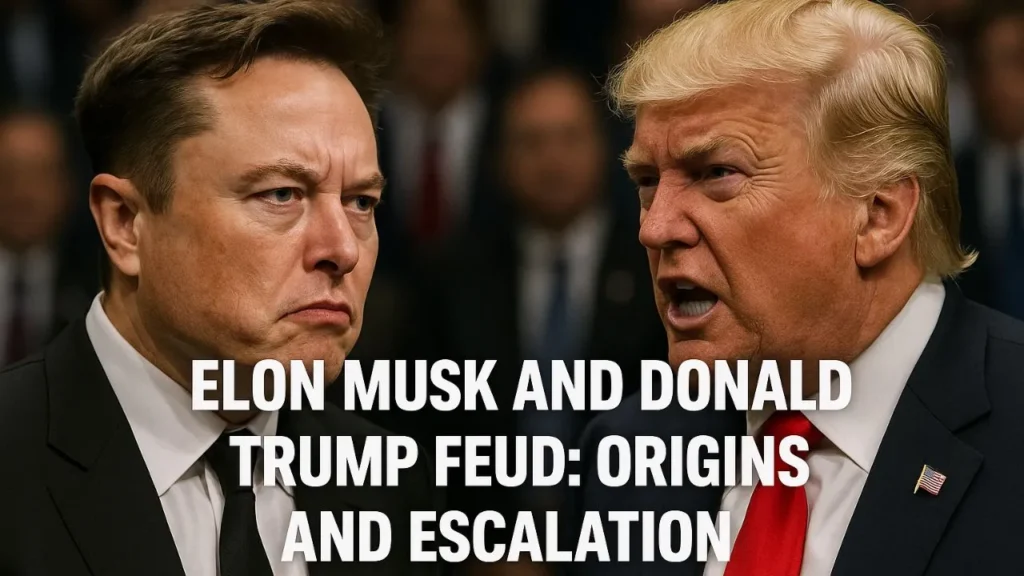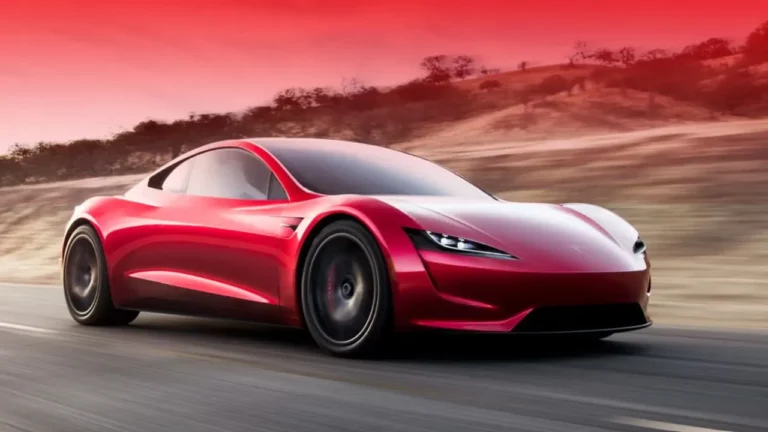Elon Musk and Donald Trump Feud: Origins and Escalation


The relationship between Elon Musk, the billionaire CEO of Tesla and SpaceX, and Donald Trump, the former and current U.S. President, has been a rollercoaster of alliance and animosity. Once close allies, their partnership imploded in a spectacular public feud in June 2025, marked by personal insults, financial threats, and political maneuvering. This article outlines the step-by-step progression of their conflict, from its roots to its peak, providing context for their fallout.
Step 1: Early Tensions and Political Misalignment (2016–2022)
- Context: Elon Musk and Donald Trump were not always aligned. In 2016, Musk supported Hillary Clinton and criticized Trump, stating he lacked the character to represent the U.S.
- Key Events:
- Musk joined Trump’s business advisory councils in 2016 but clashed with him over policies like the Paris Climate Agreement, leading Musk to resign from the councils in 2017.
- In 2022, Musk announced a shift from supporting Democrats to Republicans, citing the Democrats’ “division and hate.” However, he publicly sparred with Trump, who called Musk a “b—s— artist” at a rally, while Musk suggested Trump should retire from politics.
- Significance: These early interactions set the stage for a volatile relationship, with ideological differences and personal egos creating friction.
Step 2: Alliance Forms During 2024 Election (July–November 2024)
- Context: Musk’s political shift intensified as he became a major Republican donor, contributing nearly $300 million to Trump’s 2024 campaign.
- Key Events:
- July 13, 2024: After an assassination attempt on Trump in Pennsylvania, Musk endorsed him on X, sharing a video and wishing for his recovery.
- October 5, 2024: Musk appeared at a Trump rally in Butler, Pennsylvania, wearing a “Make America Great Again” cap and calling himself “Dark MAGA.”
- November 6, 2024: Trump won the election, praising Musk in his victory speech: “A star is born — Elon!” Musk’s financial and social media support was credited with boosting turnout in battleground states.
- Significance: Musk’s massive investment and public support cemented a powerful alliance, positioning him as a key figure in Trump’s inner circle.
Step 3: Musk’s Role in Trump’s Administration (November 2024–May 2025)
- Context: Trump appointed Musk to co-lead the Department of Government Efficiency (DOGE) with Vivek Ramaswamy, tasking them with slashing federal spending and bureaucracy.
- Key Events:
- November 2024: Musk and Trump attended a SpaceX Starship launch together, showcasing their camaraderie.
- January 20, 2025: Musk attended Trump’s inauguration, though he sparked controversy with a salute linked to Nazis, drawing public backlash.
- February 2025: Musk became a visible presence in the White House, joining Cabinet meetings and appearing with Trump in the Oval Office. He posted on X, “I love @realDonaldTrump as much as a straight man can love another man.”
- March 2025: Trump defended Musk amid Tesla’s slumping sales, turning the White House lawn into a Tesla showroom. However, tensions emerged as Trump clarified that Cabinet members, not Musk, controlled their agencies.
- May 2025: Musk announced he would step back from DOGE, citing Tesla’s financial struggles (shares down over 40% in 2025) and his need to focus on his companies.
- Significance: Musk’s influence grew, but his aggressive cost-cutting and overreach alienated White House staff and Cabinet members, sowing seeds of discord.
Step 4: Cracks Emerge Over Policy Differences (April–May 2025)
- Context: Disagreements over economic policies, particularly Trump’s tariffs and spending plans, strained the relationship.
- Key Events:
- April 2, 2025: Musk criticized Trump’s tariffs on X, calling trade adviser Peter Navarro “a moron.” He privately urged Trump to reverse the tariffs, but Trump resisted until market pressures forced a partial rollback.
- May 2025: Musk clashed with Treasury Secretary Scott Bessent, reportedly escalating to a physical altercation, highlighting growing tensions within the administration.
- May 30, 2025: Musk officially left his White House role. Trump hosted a ceremonial send-off, presenting Musk with a golden key and praising him as “one of the greatest business leaders.” Musk vowed to remain a “friend and adviser.”
- Significance: Policy disputes and personal conflicts eroded their alliance, despite public displays of unity.
Step 5: Feud Erupts Over “Big Beautiful Bill” (June 3–5, 2025)
- Context: Trump’s “One Big Beautiful Bill” (OBBB), a massive tax and spending bill, became the flashpoint for their fallout. Musk opposed it, arguing it undermined DOGE’s cost-cutting efforts and increased the federal deficit.
- Key Events:
- June 3, 2025: Musk publicly criticized the OBBB on X, calling it a “disgusting abomination” and “pork-filled.” He shamed House Republicans for supporting it, escalating his rhetoric.
- June 5, 2025:
- During a meeting with German Chancellor Friedrich Merz, Trump responded to Musk’s criticism, expressing disappointment and suggesting Musk was upset over the bill’s removal of electric vehicle (EV) subsidies. Trump claimed Musk knew the bill’s details and implied he missed the White House’s “glamour.”
- Musk fired back on X, claiming the bill was passed secretly and asserting, “Without me, Trump would have lost the election.” He also suggested Trump’s tariffs would cause a recession.
- Trump posted on Truth Social, accusing Musk of “wearing thin” and going “CRAZY” after losing EV subsidies. He threatened to terminate Musk’s government contracts, worth billions for SpaceX and Tesla.
- Musk escalated further, alleging without evidence that Trump was in the Jeffrey Epstein files and endorsing a post calling for Trump’s impeachment, with Vice President JD Vance to replace him. He also threatened to decommission SpaceX’s Dragon spacecraft, critical for NASA’s ISS missions.
- Significance: The feud exploded into a public spectacle, with both men leveraging their social media platforms (X and Truth Social) to trade insults and threats.
Step 6: Peak Escalation and Immediate Fallout (June 6–7, 2025)
- Context: The feud reached its zenith as personal attacks intensified, and both sides faced significant consequences.
- Key Events:
- June 6, 2025:
- Trump told reporters he had no plans to speak with Musk, calling him “the man who has lost his mind” and considering selling his Tesla Model S, purchased to support Musk.
- Musk deleted some inflammatory X posts, including the Epstein claim and the Dragon decommissioning threat, signaling a partial retreat.
- Tesla’s stock plummeted 14%, losing $150 billion in value, though it later recovered slightly.
- Steve Bannon, a Trump ally, called for investigations into Musk’s immigration status, security clearance, and alleged drug use, and suggested seizing SpaceX under the Defense Production Act.
- Democrats, like Rep. Dan Goldman, seized on Musk’s Epstein claim, demanding the release of the files, though no evidence supported the allegation.
- June 7, 2025: Musk’s father, Errol Musk, urged him to de-escalate, while House Speaker Mike Johnson expressed hope for reconciliation. Musk continued criticizing the OBBB but avoided direct attacks on Trump.
- June 6, 2025:
- Significance: The feud’s intensity disrupted markets, strained Republican unity, and raised questions about Musk’s government contracts and Trump’s legislative agenda.
Step 7: Current State and Potential Next Steps (June 2025)
- Context: As of June 11, 2025, the feud has cooled slightly, with Musk backing off some claims and Trump focusing on his legislative priorities. However, the rift remains unresolved.
- Current Dynamics:
- Musk’s retreat from his most explosive claims suggests a desire to protect his businesses, which rely heavily on government contracts (estimated at $38 billion).
- Trump’s threats to cut Musk’s contracts and subsidies could impact SpaceX’s NASA missions and Tesla’s EV market, but he has avoided further escalation.
- The OBBB faces challenges in the Senate, partly due to Musk’s lobbying, complicating Trump’s domestic agenda.
- Public sentiment, as seen in X posts, reflects amusement and polarization, with some viewing it as a clash of egos and others as a betrayal of Trump by Musk.
- Potential Outcomes:
- Reconciliation: Given their history of volatility, a détente is possible, as seen with Trump’s past reconciliation with Steve Bannon.
- Continued Hostility: Trump could pursue investigations into Musk’s companies or cut contracts, while Musk might fund political opponents or a third party.
- Impact on Policy: The feud could derail the OBBB or DOGE’s remaining influence, affecting federal spending and economic policy.
- Significance: The feud underscores the risks of relying on private billionaires for public goods, like space travel, and highlights the fragility of alliances built on personal loyalty.
Conclusion
The Musk-Trump feud, sparked by policy disagreements and fueled by personal egos, evolved from a close alliance to a public brawl with far-reaching implications. Beginning with ideological clashes in 2016, peaking with their 2024 campaign partnership, and collapsing over the “Big Beautiful Bill” in June 2025, their conflict has disrupted markets, politics, and public discourse. As both men wield immense power—Musk through wealth and technology, Trump through political authority—the fallout continues to shape America’s economic and political landscape.






